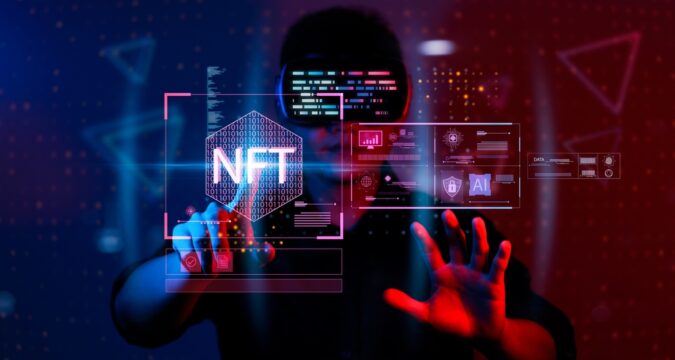
Ethereum token standard called ERC-20 has been used to launch several initial coin offerings (ICOs). But there is another token standard, ERC-721. Although it is not as popular as ERC-20, it has become integral in the Ethereum ecosystem, launching multiple NFTs worth billions of dollars.
Many tokens on the blockchain used to operate as currencies before Ethereum launched its ERC-721 token standard. Now it is possible for developers to build verifiably unique tokens that can be linked to content such as music, artwork, and sneakers, thanks to ERC-721.
What’s ERC-721?
ERC-721 can be described as a standard established for developers to follow. Adopting the same standards eases coding and makes the written codes reusable. However, it is worth highlighting that following the ERC-721 standard is voluntary. Though, developers that want their projects to be compatible with multiple applications like dapps, wallets, and exchanges are advised to follow the standard.
Web3 developers use ERC-721 token standard to create NFTs (non-fungible tokens). The term Non-Fungible means irreplaceable. That said, replacing an NFT with another is impossible because they are completely unique. On the other hand, a crypto asset like Bitcoin is considered fungible since it can be replaced with another BTC.
Who Invested ERC-721?
ERC-721 was first submitted as an Ethereum Improvement Proposal by Diester Shirley, who wrote it together with Nastassia Sachs, Jacon Evans, and William Entriken. Ethereum developers accepted it as a standard in June 2018. NFT collection Cryptokitties was among the first projects to use the ERC-721 standard.
What Makes ERC-721 Special?
Uniqueness is the primary characteristic that separates ERC-721 tokens from others. Once an ERC-721 token is launched, you won’t find a resembling one.
How are ERC-721 NFTs Created?
ERC-721 tokens are built by writing codes in smart contract programming languages like Solidity. After following the basic ERC-721 standard, developers can then add unique information about their tokens, including the token’s name, owner, and symbols.
How to Buy ERC-721 NFTs
Getting hold of NFTs has become easy nowadays, thanks to the launch of numerous NFT projects and marketplaces.
If you wish to own an ERC-721 NFT, you can head over to trusted marketplaces like Rarible or OpenSea and then connect your Ethereum wallet. After that, explore the various NFTs listed on the platforms until you find one that you love and priced within your budget. Ensure you have enough ETH for gas in order to complete the purchase.
Most NFT marketplaces have simple user interfaces, making NFT trading seamless. The Ethereum wallets you can use to store your NFTs include MetaMask, Trust Wallet, or a hardware wallet.
What Can You Do With ERC-721 NFTs?
NFTs have several use cases. Crypto users may acquire these digital arts to support artists, while some purchase them as an investment, and others buy because they simply love the artwork.
Furthermore, there are numerous NFT-powered games like Gods Unchained, which lets players use their unique tokens to participate in battles, and they can also trade them with other players. Some of these games allow players to transfer their NFTs to various platforms, upholding the Web3 principle of interoperability.
Moreover, NFTs have become popular in the music industry. Streaming platforms like Audius have made it possible for musicians to mint their songs as ERC-721 NFTs.
NFTs’ real-world use cases have also emerged. For example, some house owners are minting deeds to their properties as NFTs to streamline real estate transactions. In addition, owners of high-value assets like Rolex watches have adopted NFTs to represent ownership of their pricey items.
Other Token Standards
Since the introduction of ERC-721, a number of NFT-compatible token standards, like ERC-1155, have cropped up. The new standards seek to address some inefficiencies in ERC-721 tokens. One of them is the limited functionality that ERC-721 has when interacting with another standard, such as ERC-20. Furthermore, ERC-721 tokens consume massive space on the Ethereum blockchain, causing network congestion that potentially triggers high gas fees.


